A Look Back at 2023
By Dr Zoe Bolton, published 10th January 2023
Last year saw significant advances in reproductive science. As we usher in the New Year, we take a look back at some of the defining developments of 2023 and at the interdisciplinary research and engagement work that The Future of Human Reproduction (FoHR) team has been doing to respond to the conceptual and ethical questions raised by innovations in reproductive technologies.
Ectogenesis
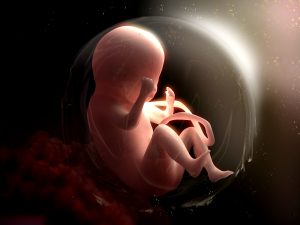 In September 2023, the first step towards clinical trials of partial ectogenesis with human fetuses was taken when the US Food and Drug Administration (FDA) met to discuss the ethics of moving research on artificial wombs from animals to humans. The term ‘partial ectogenesis’ refers to the transfer of a fetus from the maternal womb to an artificial womb to complete gestation. This technology is currently being developed to improve outcomes for extremely premature infants, and scientific teams in the US, Australia and Japan have already reported successful trials with lamb fetuses. Approval for human trials of this technology will be a major step forward and could, potentially, pave the way in the distant future for the development of ‘complete ectogenesis’, where gestation takes place wholly outside of the human body.
In September 2023, the first step towards clinical trials of partial ectogenesis with human fetuses was taken when the US Food and Drug Administration (FDA) met to discuss the ethics of moving research on artificial wombs from animals to humans. The term ‘partial ectogenesis’ refers to the transfer of a fetus from the maternal womb to an artificial womb to complete gestation. This technology is currently being developed to improve outcomes for extremely premature infants, and scientific teams in the US, Australia and Japan have already reported successful trials with lamb fetuses. Approval for human trials of this technology will be a major step forward and could, potentially, pave the way in the distant future for the development of ‘complete ectogenesis’, where gestation takes place wholly outside of the human body.
Ectogenesis is one of the major research themes of the FoHR programme. It was the subject of the first blog post on the FoHR website in March 2023 and has been a particular focus during the early stages of the project. In 2023, we funded four external projects on ectogenesis exploring: healthcare professionals’ views on partial ectogenesis (Victoria Adkins); emerging biotechnologies and binary conceptions of biological sex (Dr Elizabeth Chloe Romanis); normative implications of the metaphysics of extra-corporeal gestation (Prof Katherine Furman and Prof Thomas Schramme); and values in the design and development of artificial placenta technologies (Elizabeth Chloe Romanis and Victoria Adkins). In addition, the FoHR team undertook a series of ‘discipline hopping’ activities which shaped much of its work on ectogenesis.
The first of these took place in January 2023 when Dr Kirsty Dunn, the developmental psychologist on the FoHR team, organised a visit to Lancaster University’s Babylab. The purpose of this visit was to learn more about experiments investigating how fetuses in the womb respond to light and sound stimuli, and how crucial this is to early cognitive development. For the team, this was an opportunity to learn more about psychology methods but also to consider the implications that the importance of light and sound might have for a fetus gestated partially or wholly in an artificial womb environment: what stimuli will a fetus in this environment need to ensure that cognitive development is not compromised? This question is particularly important now given that clinical trials involving human fetuses in artificial wombs are imminent and it is something that the scientists running those trials will need to consider.
Both partial and complete ectogenesis are potentially highly controversial and another ‘discipline hopping’ strand of FoHR research, developed in 2023, draws on corpus linguistics methods to explore people’s responses to ectogenesis. This strand is led by Prof Elena Semino and Dr Alexandra Krendel and the data for the corpus is drawn from comments posted in response to two very different YouTube videos depicting ectogenesis. The first of these is Hashem Al-Ghaili’s film EctoLife: The World’s First Artificial Womb Facility which is a fictional video showing a facility where fetuses are wholly gestated in pods. The second is from Insider Tech and is about the scientific research that the Children’s Hospital of Philadelphia has been doing with lamb fetuses to develop partial ectogenesis technology.
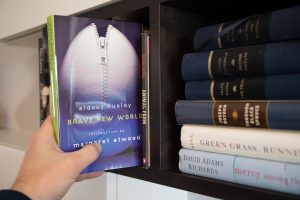 To date, the videos have generated almost thirty-thousand comments offering an insight into public perceptions of complete and partial ectogenesis, and how those perceptions are articulated. Each member of the FoHR team has brought their own disciplinary perspective to the analysis of the corpus and developing lines of enquiry include moral/ethical responses to the technology; intertextuality, for example, references to film and literature such as The Matrix and Brave New World; and representations of legal or regulatory concerns. Further work on the corpus is planned, which will offer some valuable understandings about the acceptability (or not) of these technologies in terms of public perception, and of the pitfalls that need to be avoided when scientists are communicating their research in this area, particularly when it begins to involve human subjects.
To date, the videos have generated almost thirty-thousand comments offering an insight into public perceptions of complete and partial ectogenesis, and how those perceptions are articulated. Each member of the FoHR team has brought their own disciplinary perspective to the analysis of the corpus and developing lines of enquiry include moral/ethical responses to the technology; intertextuality, for example, references to film and literature such as The Matrix and Brave New World; and representations of legal or regulatory concerns. Further work on the corpus is planned, which will offer some valuable understandings about the acceptability (or not) of these technologies in terms of public perception, and of the pitfalls that need to be avoided when scientists are communicating their research in this area, particularly when it begins to involve human subjects.
Although complete ectogenesis is still a distant prospect, it is important to identify the challenges that would arise if this technology did become available: what might the future look like if gestating a fetus wholly outside of the body did become a reality? This question is explored in Claire Horn’s book, Eve: The Disobedient Future of Birth, which Dr Zoe Bolton and Prof Stephen Wilkinson reviewed for PET BioNews in June 2023 (a longer-form version of the review was subsequently published on the project website). The FoHR team also investigated this question using speculative design methods to depict future scenarios involving complete ectogenesis.
Speculative design is the practice of creating imaginary artefacts to explore ‘what if?’ questions about the future and this strand of work is led by Prof Emmanuel Tsekleves and Dr Andy Darby. In another ‘discipline hopping’ activity, the FoHR team worked collaboratively with Andy Darby to develop artefacts for ‘The Museum of Human Reproduction: Complete Ectogenesis 2156’ exhibition. The artefacts for this futuristic museum ranged from a website exploring fundamentalist Christian responses to full ectogenesis to a blog post advertising ectogenesis birthing ceremonies. The exhibits were a vehicle for exploring the ethical, legal, cultural and social issues raised by complete ectogenesis and formed part of a suite of activities delivered at the ESRC Festival of Social Science 2023: the project’s first public engagement event.
2023 was a year of firsts for the FoHR programme and it was rounded off by the publication of the team’s first piece in The Conversation, co-authored by Stephen Wilkinson, Prof Sara Fovargue and Dr Nicola Williams, which explored whether and how artificial womb technology will change conceptions of parenthood.
In vitro-derived gametes
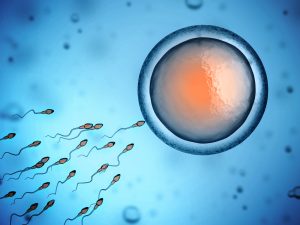 Another of the programme’s major research themes is in vitro-derived gametes: the creation of egg and sperm cells from human bodily or embryonic stem cells. Scientific developments in this area are accelerating and, at the Third International Summit on Human Genome Editing in March 2023, a team from Japan announced that it had created mice with two biological fathers. This was the first time that viable eggs had been generated from male cells. This breakthrough could lead to developments in human in vitro-derived gametes opening up reproductive choice, transforming gamete donation and procurement, and enabling greater use of selective reproduction and/or genetic modification.
Another of the programme’s major research themes is in vitro-derived gametes: the creation of egg and sperm cells from human bodily or embryonic stem cells. Scientific developments in this area are accelerating and, at the Third International Summit on Human Genome Editing in March 2023, a team from Japan announced that it had created mice with two biological fathers. This was the first time that viable eggs had been generated from male cells. This breakthrough could lead to developments in human in vitro-derived gametes opening up reproductive choice, transforming gamete donation and procurement, and enabling greater use of selective reproduction and/or genetic modification.
The rapid developments in in vitro-derived gametes require urgent policy attention and the FoHR team has been working with the Nuffield Council on Bioethics (NCoB) to explore the ethical, legal and regulatory issues raised by advances in this biotechnology. In July 2023, the FoHR team and the NCoB jointly delivered a policy briefing workshop on in vitro-derived gametes. The workshop featured expert speakers from a range of disciplines and explored key questions about in vitro-derived gametes: Will it be regulated as a treatment for fertility only, or will it increase reproductive choice more broadly? When will it be deemed sufficiently ‘safe’ to introduce and how should this be decided and by whom? Might the introduction of in vitro-derived gametes be a driver for changing the legal definition of parenthood?
These questions, and others, will be explored in more depth in a Policy Briefing Note, co-authored with the NCoB, which will be published in early 2024. Following an award from the QR Policy Support Fund at Lancaster University, further policy work on in vitro-derived gametes will take place in 2024 with a focus on the wider European context.
Genome editing
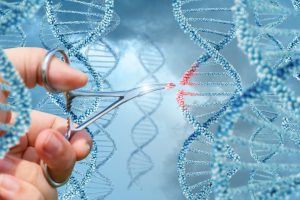 As with the project’s other major research themes there have also been advances in genomics and the use of genome editing technologies, which could eventually lead to a change in the use of these technologies in the reproductive context. In November 2023, UK Biobank announced that it had sequenced the full genetic code for half-a-million volunteers. It is hoped that this data will enable researchers to make new discoveries about how genetic diseases develop and how they can be prevented, diagnosed and treated. In terms of the latter, earlier in November, the UK Medicines and Healthcare products Regulatory Agency (MHRA) authorised the world’s first therapeutic use of CRISPR-Cas9 gene editing to treat the genetic blood disorders sickle-cell disease and beta thalassemia.
As with the project’s other major research themes there have also been advances in genomics and the use of genome editing technologies, which could eventually lead to a change in the use of these technologies in the reproductive context. In November 2023, UK Biobank announced that it had sequenced the full genetic code for half-a-million volunteers. It is hoped that this data will enable researchers to make new discoveries about how genetic diseases develop and how they can be prevented, diagnosed and treated. In terms of the latter, earlier in November, the UK Medicines and Healthcare products Regulatory Agency (MHRA) authorised the world’s first therapeutic use of CRISPR-Cas9 gene editing to treat the genetic blood disorders sickle-cell disease and beta thalassemia.
CRISPR-Cas9 allows scientists to perform microsurgery on DNA. It is effectively like a pair of molecular scissors that can cut specific sections of DNA to more easily repair, replace or delete parts of the structure. UK law currently prohibits the use of gene editing technologies, like CRISPR-Cas9, on human embryos that are being used for reproductive purposes. However, as knowledge about the human genome develops and as the effectiveness of CRISPR-Cas9 is demonstrated in the treatment of genetic diseases in other contexts, its application could be broadened to encompass the editing of human embryos to avoid inherited single gene conditions like cystic fibrosis, or to correct gene mutations that lead to debilitating diseases such as muscular dystrophy.
To explore some of the issues raised by genome editing, in 2023, the FoHR programme funded a project led by Prof Jerome de Groot in collaboration with the Contact Theatre in Manchester. The project centres around the production of a cutting-edge piece of theatre performance, The Bell Curves, and a series of wraparound events which will engage a diverse range of stakeholders in discussions about gene editing technologies. The play is currently under development and will open at the Contact Theatre in the spring of 2024.
The FoHR team has also been using other types of creative output to explore genetic modification in the reproductive context. Prof Sharon Ruston and Dr Georgia Walton have led a literature strand featuring novels and films with representations of genetics. Texts have included, Mendel’s Dwarf by Simon Mawer, which explores genetic determinism in the context of achondroplasia (‘dwarfism’); the film version of Never Let Me Go by Kazuo Ishiguro, which focuses on cloning; and Octavia Butler’s science fiction trilogy Lilith’s Brood, which features genetic editing. As with the other ‘discipline hopping’ sessions the approach to these texts has been interdisciplinary and it is hoped that the outcomes of this work will be disseminated in 2024.
The literature work that is underway on the project will be further enhanced by an FoHR Visiting Collaborator Award made to Dr Anna McFarlane. Through an interactive event, collaborative seminars, and a film screening, Anna McFarlane will consider how contemporary science fiction understands and interrogates the future possibilities for human reproduction.
Other developments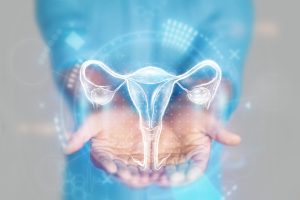 In addition to our major research themes, there have been developments in other areas of human reproduction. In August 2023, the first uterus transplant in the UK was announced. FoHR Research Associate, Dr Laura O’Donovan, was featured on Times Radio and Talk TV speaking about uterus transplantation, she was also quoted in a Euronews article, along with Stephen Wilkinson and Nicola Williams, about what the womb transplant procedure could mean for transgender women. Laura O’Donovan followed up her radio and television interviews with a blog, ‘Gifting the Womb’, which was published on the FoHR website to mark the end of National Fertility Awareness Week.
In addition to our major research themes, there have been developments in other areas of human reproduction. In August 2023, the first uterus transplant in the UK was announced. FoHR Research Associate, Dr Laura O’Donovan, was featured on Times Radio and Talk TV speaking about uterus transplantation, she was also quoted in a Euronews article, along with Stephen Wilkinson and Nicola Williams, about what the womb transplant procedure could mean for transgender women. Laura O’Donovan followed up her radio and television interviews with a blog, ‘Gifting the Womb’, which was published on the FoHR website to mark the end of National Fertility Awareness Week.
There was also a significant regulatory development in November 2023 when the Human Fertilisation and Embryology Authority (HFEA) announced recommendations to change the law on the regulation of research involving human embryos. The recommendations include opening up the possibility for changes to the 14-day rule, which imposes a limit on the cultivation of human embryos in vitro for research purposes, and to the regulation of human stem cell based embryo models (SCBEMs). One of the aims of the FoHR programme is to foster informed debate about developments in human reproduction and, following the HFEA recommendations, two articles were published on the project website: a blog exploring whether it is time to revisit the 14-day rule and an explainer about SCBEMs.
SCBEMs are embryo-like structures created in vitro using human stem cells rather than eggs and sperm. The development of these entities is rapidly progressing and, in 2023, three different research groups from the UK and US, the US, and Israel reported that they had created complete human post-implantation embryo models. These models mimic aspects of post-implantation human embryo development but they do not currently have the potential to develop into a fetus as an embryo created via fertilisation does.
Nonetheless, the status of these models in relation to the current regulatory framework in the UK is ambiguous. They are not explicitly accounted for in the Human Fertilisation and Embryology (HFE) Act, because they did not exist when it was enacted, and it is unclear if they should be afforded the same status as embryos created through fertilisation. Given this uncertainty, and the growing sophistication of these models, there is arguably a case for amending the regulatory framework to include SCBEMs. In fact, the HFEA recommendations include proposals to ‘future proof’ the HFE Act so that it can account for rapidly changing scientific advances in reproductive innovation like those currently being reported in SCBEM research.
To understand more about the current law governing the regulation of human embryos, in May 2023 the FoHR team attended a law taster session delivered by Sara Fovargue and Laura O’Donovan. The focus of the workshop was a case from 2001 where Bruno Quintavalle, on behalf of the Pro-Life Alliance, brought a legal challenge arguing that human embryos created using Cell Nuclear Replacement (CNR), a form of cloning, were outside of the scope of the HFE Act. The session highlighted the need for clarity about what constitutes a human embryo: an issue that is still relevant some 22 years later with the advent of SCBEMs.
SCBEMs were also the subject of a talk, given to the FoHR team, by cell biologist, Dr Richard Mort. The talk highlighted the different types of SCBEMs in development, the rate of progress using mouse and human models, and challenges around the multiple terms that researchers are using to describe these entities. It offered the team an introduction to this complex area of science and enabled discussion of some of the issues raised by SCBEMs.
Looking back to look forward
From the developments in 2023, it is clear that human reproductive science is rapidly advancing and continues to push the boundaries of what is possible. The future-facing work of the FoHR programme is crucially important in the light of such accelerated change and the interdisciplinary work that has already started, and that will continue in 2024, is an important step toward addressing some of the conceptual and ethical questions raised by reproductive innovation.
Other Posts
- “The genetics bomb could be a disaster”: Author Simon Mawer on Mendel’s Dwarf
- Spotlight on CRISPR-Cas9
- Exhibition Review: Genetic Automata
- Explainer: Human Stem Cell Based Embryo Models
- Is it time to revisit the 14-day rule?
- Gifting the Womb: The UK’s First Uterus Transplantation
- Discipline Hopping: UK Law and Emerging Reproductive Technologies
- Reflections: A Look Back at the First Year of the Project
- Book Review – Eve: The Disobedient Future of Birth
- Ectogenesis: A Retrospective
